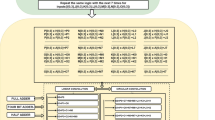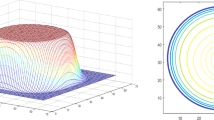Abstract
Vedic mathematics is the ancient Indian method of mathematics based on 16 Sutras applicable to various branches of mathematics like trigonometry, calculus, geometry, conics etc. Multiplication is effectively used in modern communication and Digital Signal Processing applications. Ordinary multiplication requires propagation of carry from LSB to MSB while adding binary partial products, which limits the overall speed of multiplication. Vedic mathematics helps in generation of partial products and sums in one step, and ensures reduction in overall propagation delay. Urdhva Tiryakbhyam Sutra and Nikhilam Sutra are the two multiplication techniques used in Vedic mathematics. In this paper, an 8 * 8 Nikhilam Sutra multiplier for three different sets of bases is realized. The concepts of Urdhva Tiryakbhyam Sutra multiplication are used for the implementation of the proposed multiplier. The implementation results are compared with that of a Modified Booth’s multiplier in terms of delay, area and power. The design is synthesized in Synopsys Design Compiler using CMOS 90 nm technology, and results show that the proposed multiplier using Nikhilam Sutra with 25 bases is faster than the Modified Booth’s multiplier by 51.28%.





















Similar content being viewed by others
References
Hwang K (1979) Computer arithmetic: principles, architecture and design. Wiley, London
Mano MM (1993) Computer system architecture. Prentice Hall, Englewood Cliffs
Ma G, Taylor FJ (1990) Multiplier policies for digital signal processing. ASSP Mag IEEE 7:6–20
Tiwari HD, Gankhuyag G, Kim CM, Cho YB (2008) Multiplier design based on ancient Indian vedic mathematics. In: SoC design conference (ISOCC’08) international, pp II-65–II-68
Saha HS, Mitra A (2007) A digital multiplier architecture using Urdhva Tiryakbhyam Sutra of Vedic mathematics. In: Proceedings sixth international conference on computation, control and instrumentation, pp 76–80
Akhter S (2007) VHDL implementation of fast N × N multiplier based on vedic mathematic. In: 18th European conference on circuit theory and design, (ECCTD), pp 472–475
Dhillon HS, Mitra A (2008) A reduced-bit multiplication algorithm for digital arithmetic. World Acad Sci Eng Technol 19:719–724
Thapliyal H, Srinivas MB (2004) High speed efficient N × N bit parallel hierarchical overlay multiplier architecture based on ancient Indian Vedic mathematics. Enformatika Trans 2:225–228
Mehta P, Gawali D (2009) Conventional versus vedic mathematical method for hardware implementation of a multiplier. In: International conference on advances in computing, control, & telecommunication technologies, 2009. ACT’09, pp 640–642
Saha P, Banerjee A, Bhattacharyya P, Dandapat A (2011) High speed ASIC design of complex multiplier using vedic mathematics. In: Students’ technology symposium (TechSym), IEEE, pp 237–241
Saha P, Banerjee A, Dandapat A, Bhattacharyya P (2011) Vedic mathematics based 32-bit multiplier design for high speed low power processors. Int J Smart Sens Intell Syst 4:272
Tirtha SBK (1992) Vedic mathematics. Motilal Banarsidass Publications, Varanasi
Booth AD (1951) A signed binary multiplication technique. Q J Mech Appl Math 4:236–240
MacSorley OL (1961) High-speed arithmetic in binary computers. Proc IRE 49:67–91
Lamberti F, Andrikos N, Antelo E, Montuschi P (2011) Reducing the computation time in (short bit-width) two’s complement multipliers. IEEE Trans Comput 60:148–156
Author information
Authors and Affiliations
Corresponding author
Rights and permissions
About this article
Cite this article
Prabhu, E., Mangalam, H. & Gokul, P.R. A Delay Efficient Vedic Multiplier. Proc. Natl. Acad. Sci., India, Sect. A Phys. Sci. 89, 257–268 (2019). https://doi.org/10.1007/s40010-017-0464-4
Received:
Revised:
Accepted:
Published:
Issue Date:
DOI: https://doi.org/10.1007/s40010-017-0464-4




